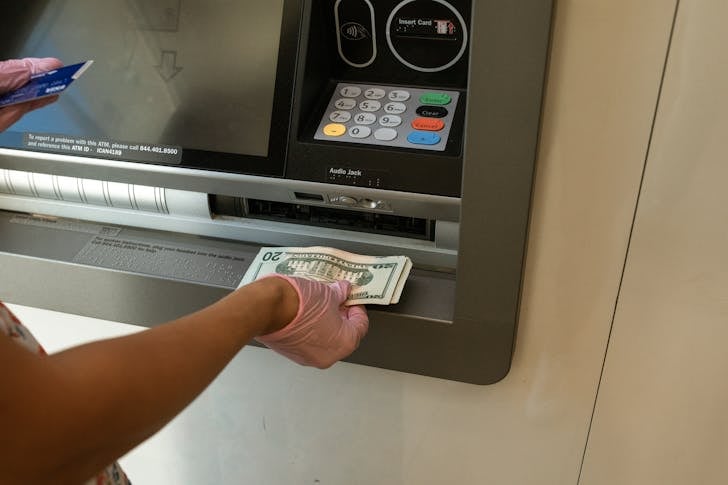
How to Start an ATM Business

Starting a new business can be daunting, especially when it involves something as specialized as an ATM business. However, with the right approach and thorough planning, this venture can become a lucrative source of income. If you’ve been curious about how to start an ATM business, you’re in the right place. This comprehensive guide will provide the essential steps to get you started.
Why Start an ATM Business?
ATMs offer a predictable income stream since people always need cash. Once set up, these machines require relatively low maintenance, making them a convenient and hassle-free business option. Additionally, with the global ATM market expected to grow steadily over the coming years, there’s significant potential for expanding your operations by adding more machines over time. The flexibility in work hours is another bonus, allowing you to manage your time according to your preferences.
How to Start an ATM Business in 5 Simple Steps
Step 1: Conduct Market Research
Market research is essential for a successful ATM business. Start by estimating start-up costs, including purchasing and maintenance. Identify high-traffic locations like convenience stores, gas stations, and retail outlets. Understanding your competition will help you find opportunities to differentiate.
Step 2: Fulfill Legal and Financial Requirements
Choose a suitable business structure, such as an LLC or sole proprietorship. Register your business with state and federal authorities. Obtain all necessary licenses and permits based on your location. Open a dedicated business bank account for efficient financial management.
Step 3: Choose the Right ATM Machine
Select ATMs that fit the needs of your target market and chosen locations. Compare different models for reliability, features, and cost. Popular options include the Genmega Onyx and Hyosung Halo II. Investing in the right machines ensures smooth operations and attracts more customers.
Step 4: Install and Operate the ATM Machines
Install ATMs in secure, high-visibility locations to maximize usage. Ensure they are connected to a reliable network for transaction processing. Regularly maintain the machines by checking cash levels and addressing technical issues. Proper maintenance keeps your ATMs running smoothly and enhances customer satisfaction.
Step 5: Market and Promote Your ATM Business
Develop a marketing strategy targeting your identified customer base. Use local advertising and partnerships with nearby businesses. Highlight your ATMs’ convenience and additional services to attract users. Competitive fees and promotions can set your business apart and increase usage.
Understanding and Overcoming Challenges
Running an ATM business presents several challenges that require strategic management. Staying ahead of the competition is crucial as technological advancements and new market players emerge. The rise of mobile payments and online banking may render ATMs obsolete in some areas. Adapting to these changes and continually innovating is key to remaining relevant.
Security threats, such as cyberattacks and skimming, are significant concerns for ATM operators. Protecting machines from these threats is essential to maintaining customer trust and loyalty. Additionally, compliance with varying regulations across different regions is another challenge. Ensuring adherence to all applicable rules is vital for the smooth operation of your ATM business.
Stay updated on industry trends and technological advancements in the ATM sector. Regularly review your operations and customer feedback to identify areas for improvement. Adapting to changes like new payment technologies or security protocols can keep your business competitive. Being proactive ensures long-term success and customer satisfaction.
More in Career
-
Has the FBI Arrested P Diddy? What You Need to Know About P Diddy Arrest
In recent developments that have captivated the public and media alike, the homes of Sean “Diddy” Combs, also known as Puff...
April 17, 2024 -
3 Easy Ways to Cash in Your Savings Bonds
Online With a TreasuryDirect Account In the age of digital banking and online investments, managing your savings bonds electronically is a...
April 11, 2024 -
How Employees Can Be Motivated By Their Own Work?
If there is one question every employee asks, it is: What makes a job fun and motivating? Well, this is not...
April 4, 2024 -
Why ATM Machines Are Still Irreplaceable Despite Modern Technologies
The landscape of banking and personal finance is rapidly transforming, leaving many to wonder about the future of ATM machines. In...
March 26, 2024 -
Taylor Kinney Returns in “Chicago Fire” Season 12 – Is Severide’s Character Losing Its Spark?
In “Chicago Fire,” Kelly Severide, played by the talented Taylor Kinney, has been a beacon of courage and commitment. However, as...
March 23, 2024 -
How to Dodge High APR on Personal Loans & Lock in the Best Rates
Securing a ‘good’ Annual Percentage Rate (APR) on your personal loan is no easy feat. It requires a deeper financial literacy....
March 14, 2024 -
6 Ways Chat GPT Can Help You Land Your Dream Job
We are living in a competitive job market, and standing out from the crowd is more crucial than ever. Enter Chat...
March 9, 2024 -
Cap Table Management Firm Pulley Gets Featured on Forbes’s Top 50 Fintech Startups
Pulley, a San Francisco-based cap table management firm, is swiftly gaining momentum, challenging industry giants and redefining the landscape for startups...
February 27, 2024 -
Redefining Your Path: 6 Essential Steps for Career Reengineering
So, you’re at a crossroads in your career, contemplating a change that could redefine your professional path or perhaps dreaming of...
February 19, 2024

















You must be logged in to post a comment Login